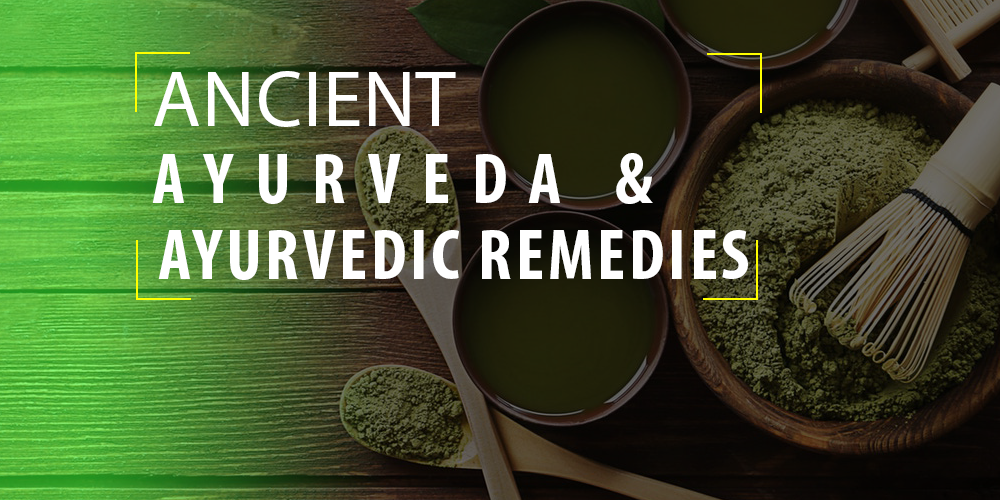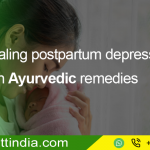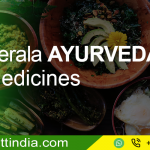Srila Vysadeva, a highly learned sage, dating back to over 5,000 years is credited with writing the Vedas, namely, Rig Ved, Yajur Ved, Sama Ved and Atharva Ved. It is during this period that Ayurveda & Ayurvedic remedies are said to have originated. Ayurveda is a branch present within the Vedas, and stands for ‘Science of Life’.
Ayurveda is indeed elixir of life, as it discusses on how mere changing of food habits depending upon body type and needs (Doshas like Kapha, Vayu and Pitta), it is possible to transform lives for the better. Ayurvedic remedies present in the Ayurveda helps to cure unimaginable disease. This is achieved by making use of natural herbal extracts. The fact is quite surprising and interesting as well as to how people before 5,000 years had discovered and used nature’s healing properties. But they did not possess any of the advanced equipments or chemical compounds that are used currently. But still, they did manage to create numerous Ayurvedic remedies in those days.
During the Vedic age were written few works like the Charaka Samhita and Susruta Samhita. Charaka Samhita also known as Charaka Samhita Sutra is considered to be a work compiled by different authors. There are 120 chapters in it and provides information on how patients are to be judged. This is shortened to 10 easy to understand points, namely:
- Abnormality
- Constitution
- Stability
- Essence
- Age
- Physical fitness
- Digestive capacity
- Psychic strength
- Diet suitability
- Body measurements
Susruta Samhita is considered to be a text providing information on surgical concepts. There are in total 184 chapters with 1120 illnesses being given in detailed decryption, combined with detailed anatomical study, 700 medicinal plants, 57 preparations from animal sources and 64 from mineral sources. Before 800 B.C., Susruta had performed Cataract surgery without using any of the latest advanced equipments, hospitals, medicines among others.
Ashtanga Hridaya is the third important text on Ayurvedic remedies, considered to be a combined work of Susrut and Charak. It is believed that these books are about 1,200 years old.
In Ayurvedic remedies, hygiene is given utmost importance and includes regular skin care, bathing, eye washing and cleansing of teeth.
Ayurvedic remedies make use of plant based treatments and medicines. The patient also is offered minerals like copper, lead, arsenic and sulphur, etc. as prescribed. The process to mix herbs and minerals is called Rasa Shastra.
The patient recommended to have an operation was given alcohol as narcotic. Bleeding was stopped with both tar and oil. Bleeding also were stopped in several other ways like blood vessel ligation, heat cauterization, application of animal or herbal preparations, including other medicinal preparations for facilitating clotting. This ensures draining of less blood from the body. Burns were treated with natural honey created by honey bees.
Mustard oil boiled with turmeric was applied topically to help relieve pain. For calcium deficiency, calcium tablets did not exist 5,000 years back. So people were suggested garlic. If consumed in excess, garlic similar to today’s calcium tablets did cause side effects.
An ancient Indian book named Atharva Veda contains 114 hymns providing cure to various types of diseases. It is from these hymns that Ayurvedic remedies were created to treat different types of diseases.
Although Ayurveda had its origin in India, its influence can also be felt the world over. People across the globe seem to be interested to learn Ayurveda. Ayurvedic texts have been translated by Razi Sempion and Avicenna into Arabic language to help establish Islamic medicine.
During 16th century, Paracelsus, in Europe also referred to as ‘father of Western medicine’ had invented and adopted a medicine system that as strongly influenced from Ayurvedic remedies and Ayurveda. British physician travelling to India in those days had witnessed the natives performing rhinoplasty using traditional methods. An article had been published reporting this in ‘Gentleman’s Magazine’ in 1794. An English surgeon named Joseph Constantine Carpue had spent around two decades studying and understanding native plastic surgical techniques. Then, he performed major surgery in the western world in 1885.
Doshas include several parts of the body like:
Kapha
- Throat
- Bronchi
- Nostrils
- Sinuses
Pitta
- Pancreas
- Duodenum
- Stomach
- Gall bladder
- Spleen
- Liver
Vata
- Large intestine
- Small intestine
Two doshas can be found in each and every human being, with some being dominated purely by the other. In others, they can be combination of all the three doshas, in rare cases. For these doshas, in Ayurvedic remedies, different people suffering from same disease might receive different types of herbs. The reason is probably because due to each individual’s nature being different from the other. Firstly, it is necessary to diagnose the person of the imbalance along with other developments taking place in the body, the reason why some disease may have affected. Then, it is essential to determine the disorder of which type of dosha has caused this disease in the person.
The truth is that Ayurveda is not just about medicines and herbs, but also is regarded to be art of living. This is completely safe and original and remedies offered are complete. It tends to cover all medicinal fields and is referred to as complete medical system that still exists. Although, there are available other medicinal forms in today’s world, they cannot be called complete. They still could be lagging behind with respect to some field or another.
With Ayurveda & Ayurvedic remedies, we are able to enjoy a different view of life. Using such remedies, it has become possible for everyone to be healthy and beautiful within and outwards, irrespective of status or class. When availing Ayurvedic remedies, there is no need to spend a fortune. Ayurvedic is a clear example of nature providing remedies for all types of ailments and diseases, although modern science is yet to find appropriate cure for some chronic diseases such as cancer.
Pizhichil Ayurveda Treatment, Ilakkizhi Ayurvedic Treatment, Amladhara Ayurveda Treatment, Akshitarpana Ayurvedic Treatment, Nasya Ayurvedic Treatment, Dhanyamladhara Ayurvedic Treatment








